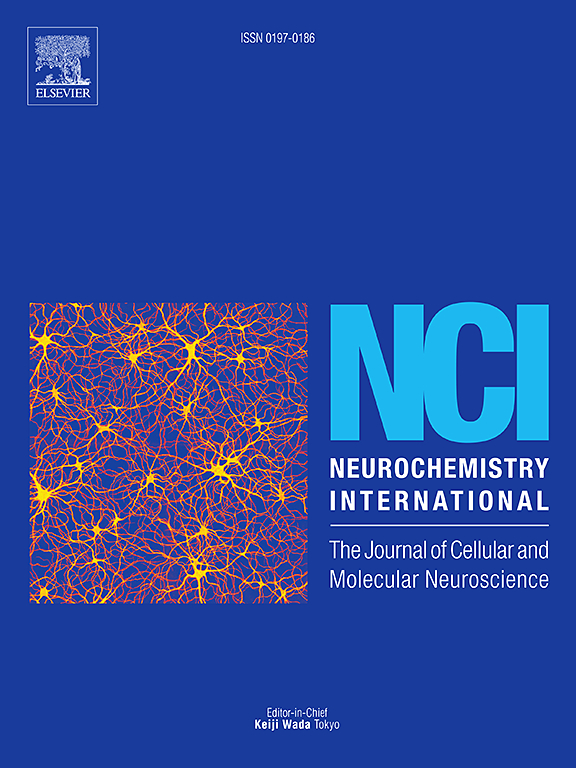Temporal and spatial expression of Phosphodiesterase-4B after sciatic nerve compression in rats and its mechanism of action on sciatic nerve repair
IF 4
3区 医学
Q2 BIOCHEMISTRY & MOLECULAR BIOLOGY
引用次数: 0
Abstract
Background
Macrophage phenotype transformation is vital in sciatic nerve injury. The study of biomolecule expression and its impact on macrophage phenotype transformation is a current research focus.
Material and methods
We created a rat model of sciatic nerve compression injury to examine the expression of PDE4B and the distribution of M1 and M2 macrophages over time and their relationship. We confirmed the effect of inhibiting PDE4B expression on macrophage phenotype changes and its role in sciatic nerve injury repair. The experiments consisted of immunofluorescence, western blotting, HE staining, TEM, and behavioral evaluation. Investigate in vivo experiment results with RAW264.7 cells in vitro. PDE4B knockdown lentivirus was transfected into RAW264.7 cells and stimulated with LPS and IFN-γ. We assessed CD86 and CD206 expression using flow cytometry and western blot. The relationship between PDE4B and the TLR4/NF-κB pathway was studied.
Results
PDE4B peaked on day 7 after surgery, alongside the highest M1 macrophages count. PDE4B and M1 macrophages decreased, and M2 macrophages increased. PDE4B inhibition reduced M1 macrophages, increased M2 macrophages, suppressed inflammation, and promoted sciatic nerve repair while alleviating pain. In vitro experiments confirmed that PDE4B regulated macrophage phenotype via the TLR4/NF-κB pathway. Inhibiting PDE4B disrupted this pathway and promoted M2 macrophage transformation.
Conclusions
In the sciatic nerve injury, PDE4B expression is linked to the M1 macrophage phenotype. Low PDE4B expression facilitates the M1 to M2 macrophage transformation and supports sciatic nerve repair. The TLR4/NF-κB pathway is involved in this process.
大鼠坐骨神经受压后磷酸二酯酶- 4b的时空表达及其对坐骨神经修复的作用机制
背景:巨噬细胞表型转化在坐骨神经损伤中至关重要。生物分子表达及其对巨噬细胞表型转化的影响是当前研究的热点。材料与方法:建立坐骨神经压迫损伤大鼠模型,观察PDE4B的表达与巨噬细胞M1、M2的分布随时间的变化及其关系。我们证实抑制PDE4B表达对巨噬细胞表型改变的影响及其在坐骨神经损伤修复中的作用。实验包括免疫荧光、免疫印迹、HE染色、透射电镜和行为评价。体外研究RAW264.7细胞的体内实验结果。将PDE4B敲低慢病毒转染RAW264.7细胞,用LPS和IFN-γ刺激。我们用流式细胞术和western blot检测CD86和CD206的表达。研究PDE4B与TLR4/NF-κB通路的关系。结果:PDE4B在术后第7天达到峰值,同时M1巨噬细胞计数最高。PDE4B、M1巨噬细胞减少,M2巨噬细胞增多。抑制PDE4B可减少M1巨噬细胞,增加M2巨噬细胞,抑制炎症,促进坐骨神经修复,同时减轻疼痛。体外实验证实PDE4B通过TLR4/NF-κB通路调控巨噬细胞表型。抑制PDE4B破坏这一途径,促进M2巨噬细胞转化。结论:在坐骨神经损伤中,PDE4B的表达与M1巨噬细胞表型相关。PDE4B低表达促进巨噬细胞M1向M2转化,支持坐骨神经修复。TLR4/NF-κB通路参与了这一过程。
本文章由计算机程序翻译,如有差异,请以英文原文为准。
求助全文
约1分钟内获得全文
求助全文
来源期刊

Neurochemistry international
医学-神经科学
CiteScore
8.40
自引率
2.40%
发文量
128
审稿时长
37 days
期刊介绍:
Neurochemistry International is devoted to the rapid publication of outstanding original articles and timely reviews in neurochemistry. Manuscripts on a broad range of topics will be considered, including molecular and cellular neurochemistry, neuropharmacology and genetic aspects of CNS function, neuroimmunology, metabolism as well as the neurochemistry of neurological and psychiatric disorders of the CNS.
 求助内容:
求助内容: 应助结果提醒方式:
应助结果提醒方式:


